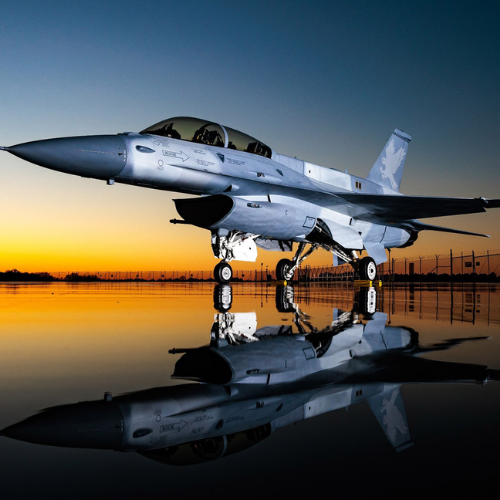Lockheed Martin, one of the biggest defense and aerospace companies in the United States, has announced that it is ready to deliver brand new F-16 fighter jets to the Armed Forces of the Philippines (AFP). This news comes after the US government gave its approval for the sale of 20 F-16 Block 70 aircraft to the Philippines, a move that could significantly strengthen the country’s air power capabilities. However, while some see this as an important step for national security, others have raised concerns about the cost and potential risks involved.
A Powerful Fighter Jet for the Philippines
The F-16 Block 70 is one of the most advanced fighter jets in the world. Known for its ability to carry out both air-to-air defense and air-to-ground support missions, this aircraft is designed to be highly versatile and effective in combat. It comes with advanced technology, including a system called the Automatic Ground Collision Avoidance System, which helps prevent crashes by automatically taking control of the jet if the pilot is in danger of crashing into the ground.
The F-16 Block 70 has a proven track record, with over 3,100 of these aircraft being used by 28 countries around the world. The jet was recently part of the Cope Thunder joint exercises held at Clark Air Base in Pampanga, Philippines. These exercises involved both Philippine and US military forces, and they showcased the F-16’s ability to operate effectively in complex environments. The exercises also demonstrated how the F-16 can work together with other aircraft, strengthening the interoperability between the Philippine Air Force (PAF) and the US military.
Lockheed Martin is confident that the F-16 will be a valuable addition to the PAF’s fleet. The company emphasized that the F-16 can easily integrate with the PAF’s existing fighter jets, such as the FA-50, which is also a part of the Philippine Air Force. This is important because it will reduce the cost of maintaining the jets and ensure that pilots are ready to operate them with little additional training.
F-16 Jets Can Be Supported Locally
Another important aspect of the F-16 Block 70 is that it can be maintained and supported locally in the Philippines. This is a major advantage for the country, as it means that the PAF won’t have to rely on overseas support to keep the jets in good working condition. This local capability also helps ensure that the jets are always ready for action and reduces the time it takes to get them repaired if something goes wrong.
Lockheed Martin has also pointed out that the F-16’s parts and equipment are compatible with those of the PAF’s current fleet, making it easier to maintain the new jets at a lower cost. This could make it more affordable for the Philippines to operate a modern fleet of fighter jets and help improve the country’s overall defense readiness.
Controversy Surrounding the Deal
While the decision to purchase the F-16 jets is seen by many as a step forward for Philippine defense, there are also critics who are concerned about the costs involved. The sale of 20 F-16 fighter jets is valued at $5.58 billion, a significant amount of money. Some argue that this money could be better spent on other important needs, such as housing, healthcare, and social services.
One criticism comes from the Bayan Muna party-list, which has expressed concern that this deal could lead to an arms race in the Asia-Pacific region. They argue that buying advanced weaponry like the F-16 jets could increase tensions in the region, making the situation more volatile. Instead of investing in military equipment, the group believes the Philippine government should focus on addressing pressing issues like the country’s housing crisis. According to reports, there is already a shortage of millions of homes in the Philippines, and critics argue that the billions spent on fighter jets could have been used to build affordable housing for the country’s poor.
Critics also worry that purchasing such expensive weapons might not improve the security of ordinary Filipinos. They point out that many people in the Philippines are living in dangerous conditions, such as informal settlements or flood-prone areas, and that the government should prioritize providing basic services and support for these communities.
The debate over the F-16 purchase highlights the ongoing tension between security and social needs. While some believe that strengthening the military is necessary for national defense, others argue that the government should first address the pressing needs of the people. This disagreement is likely to continue as the Philippines moves forward with its plans to modernize its armed forces.

